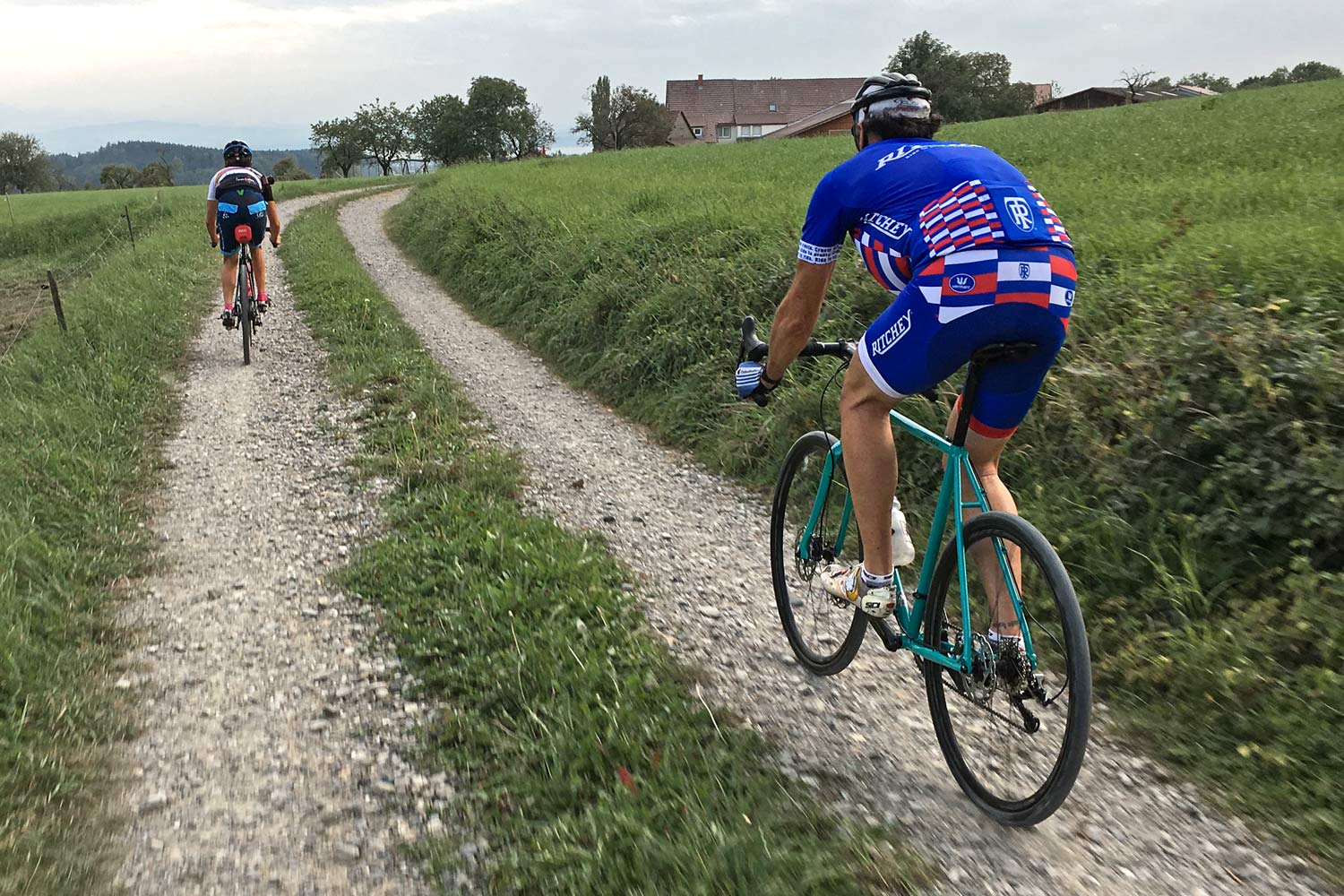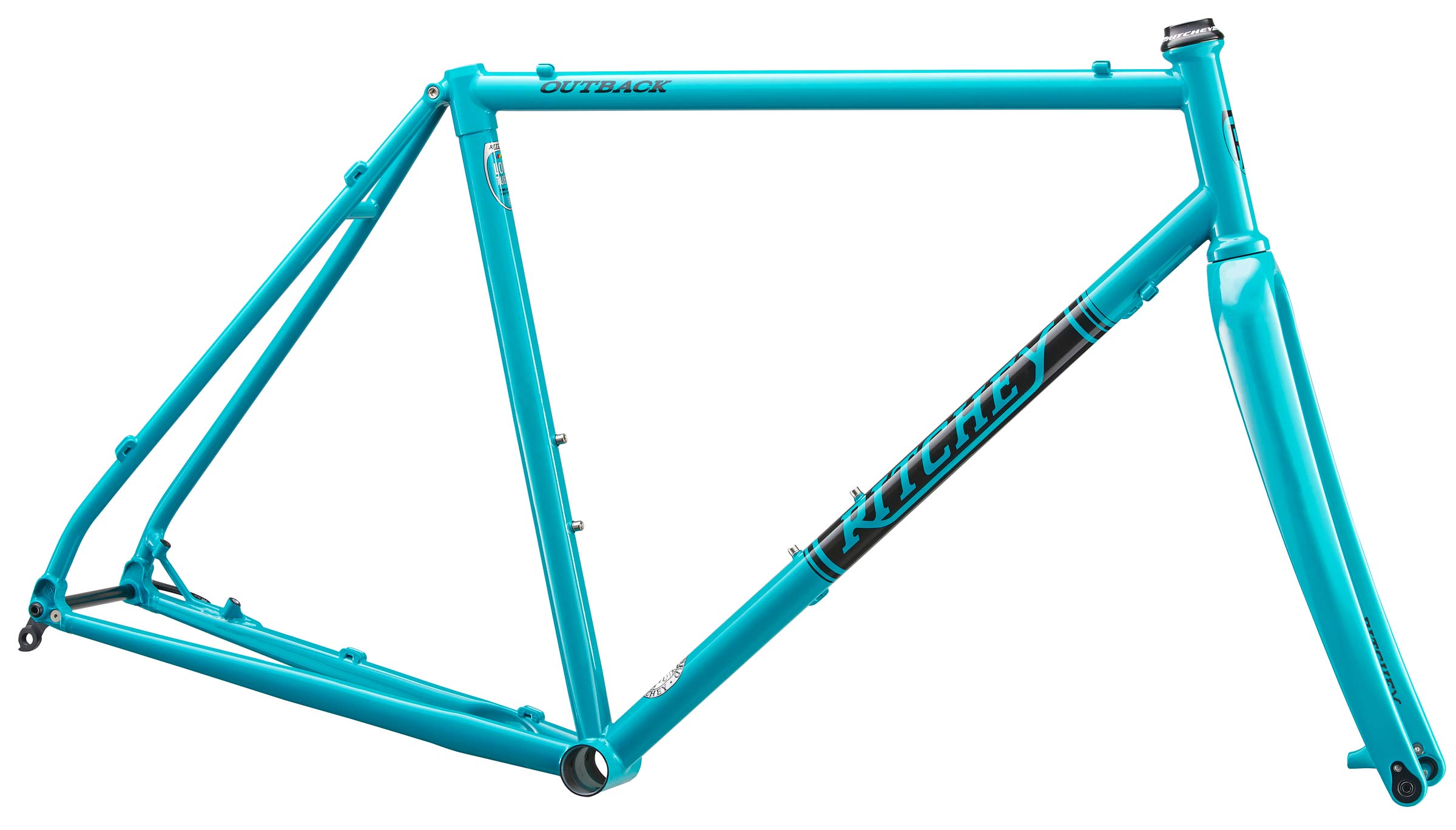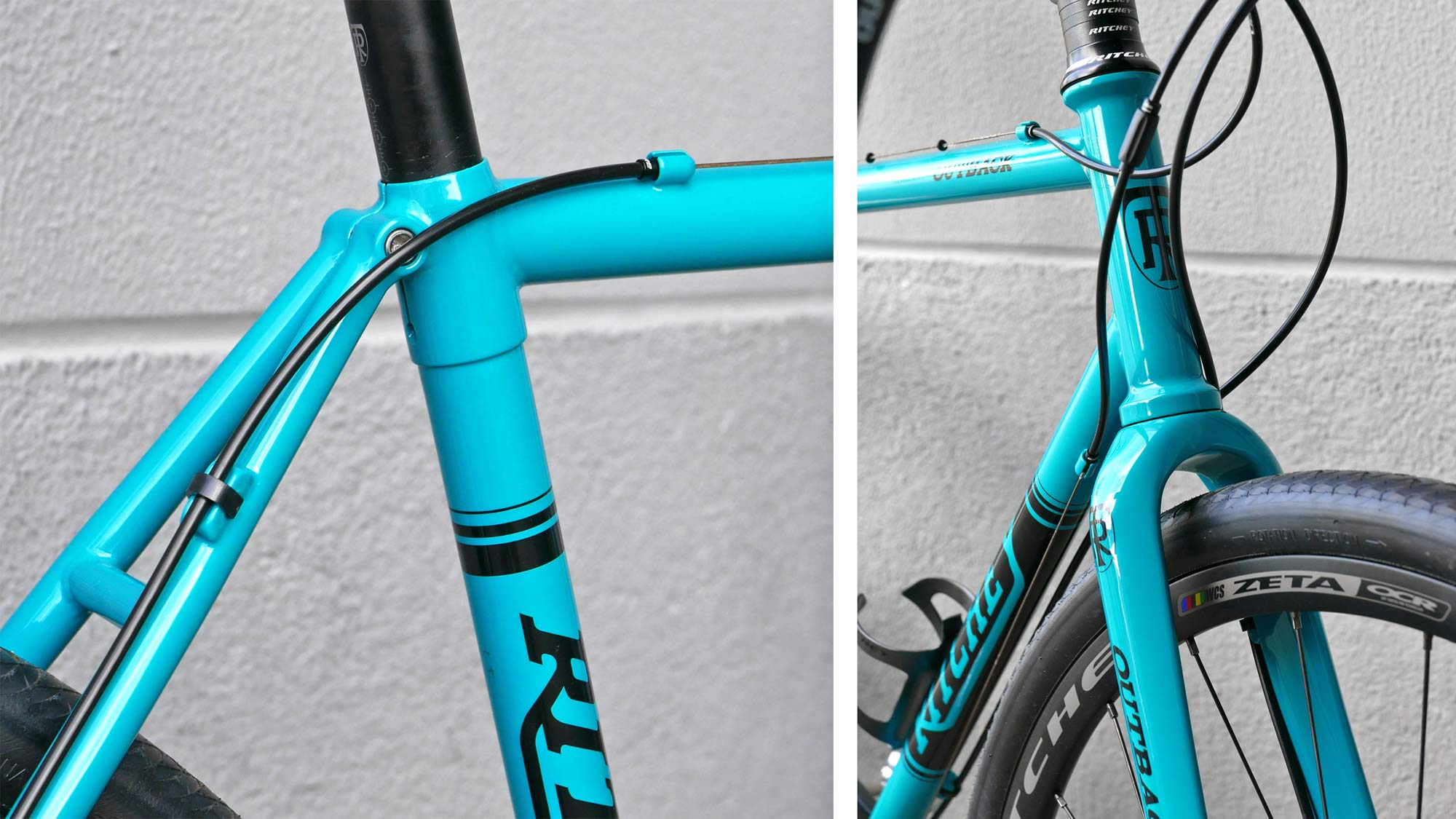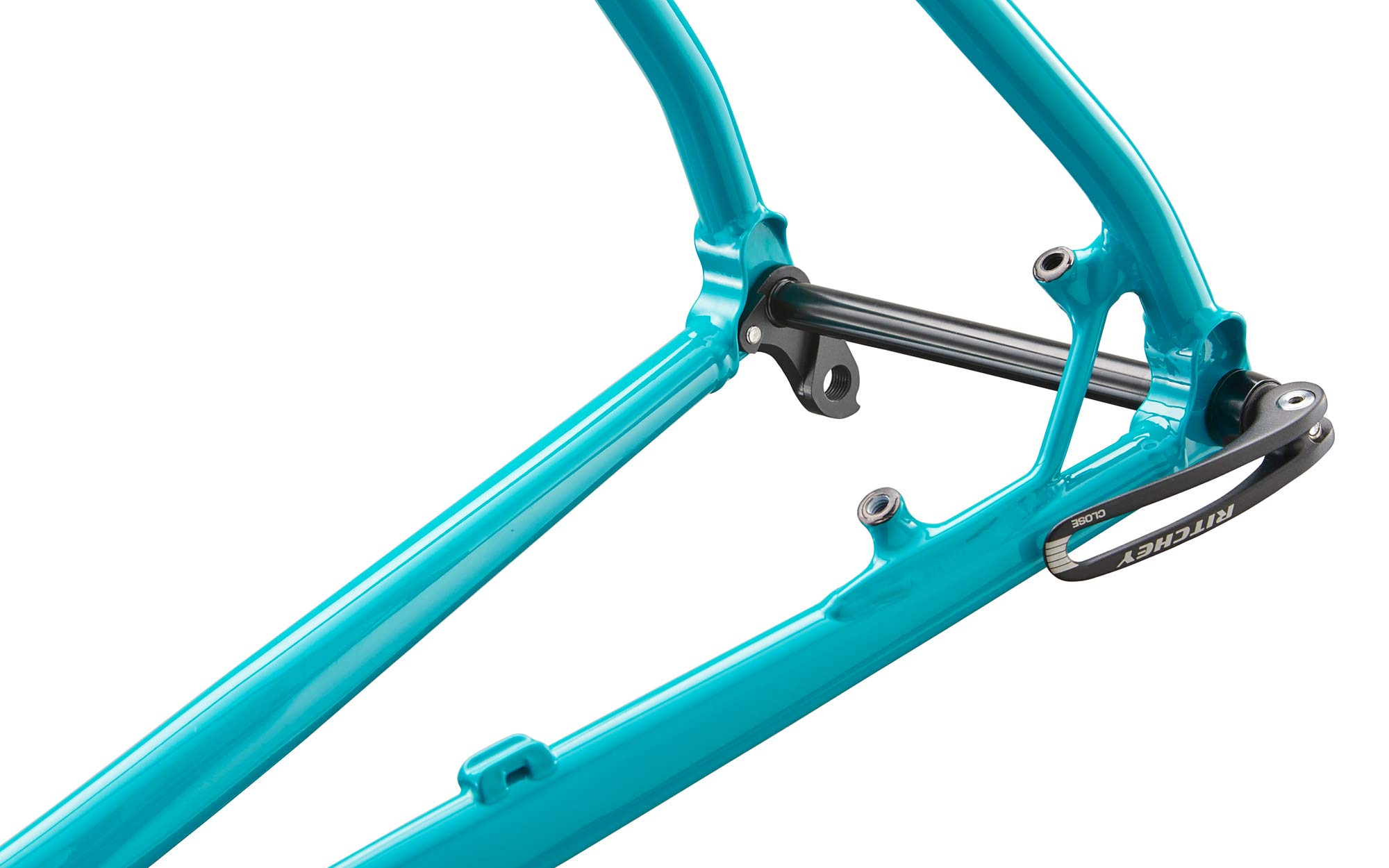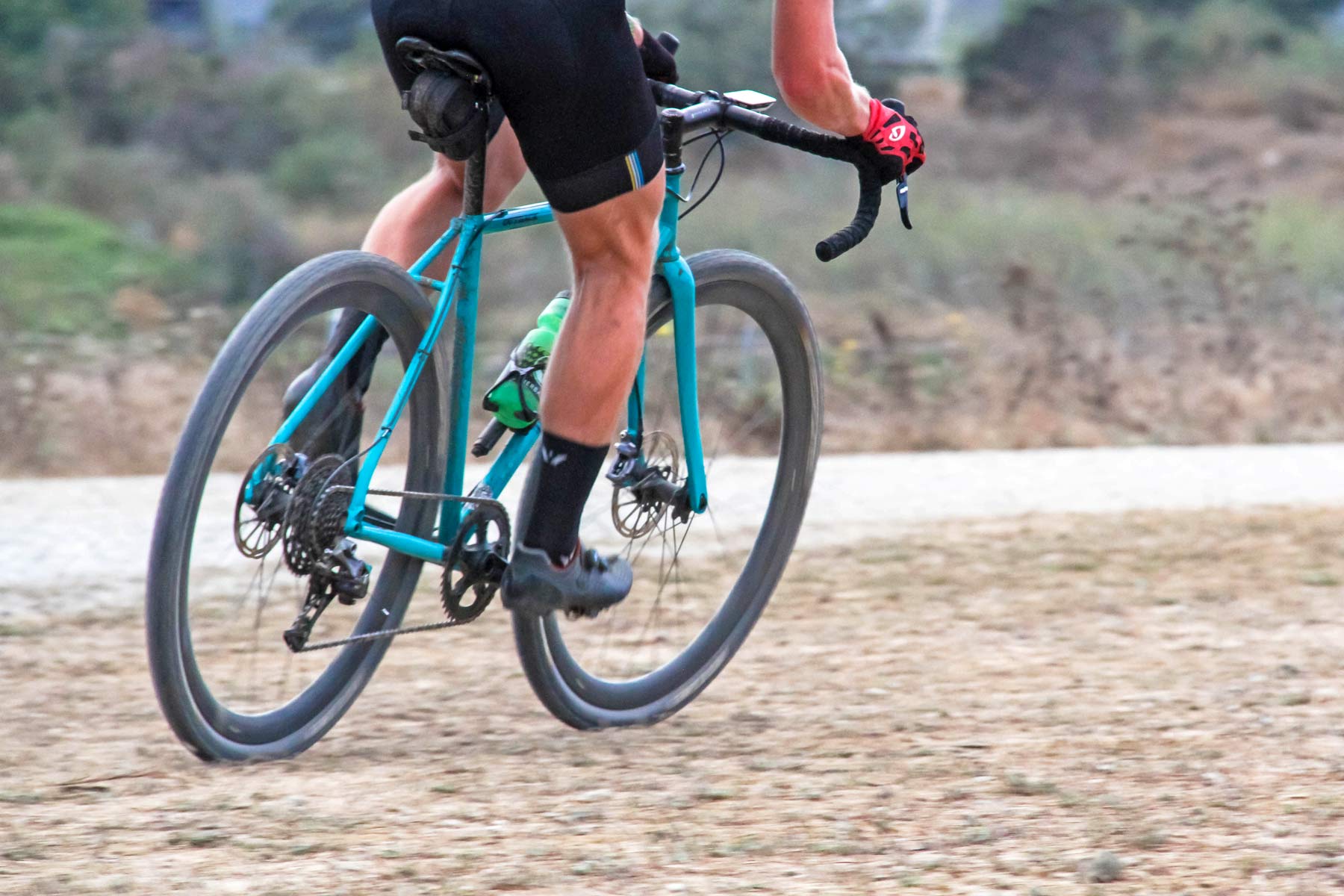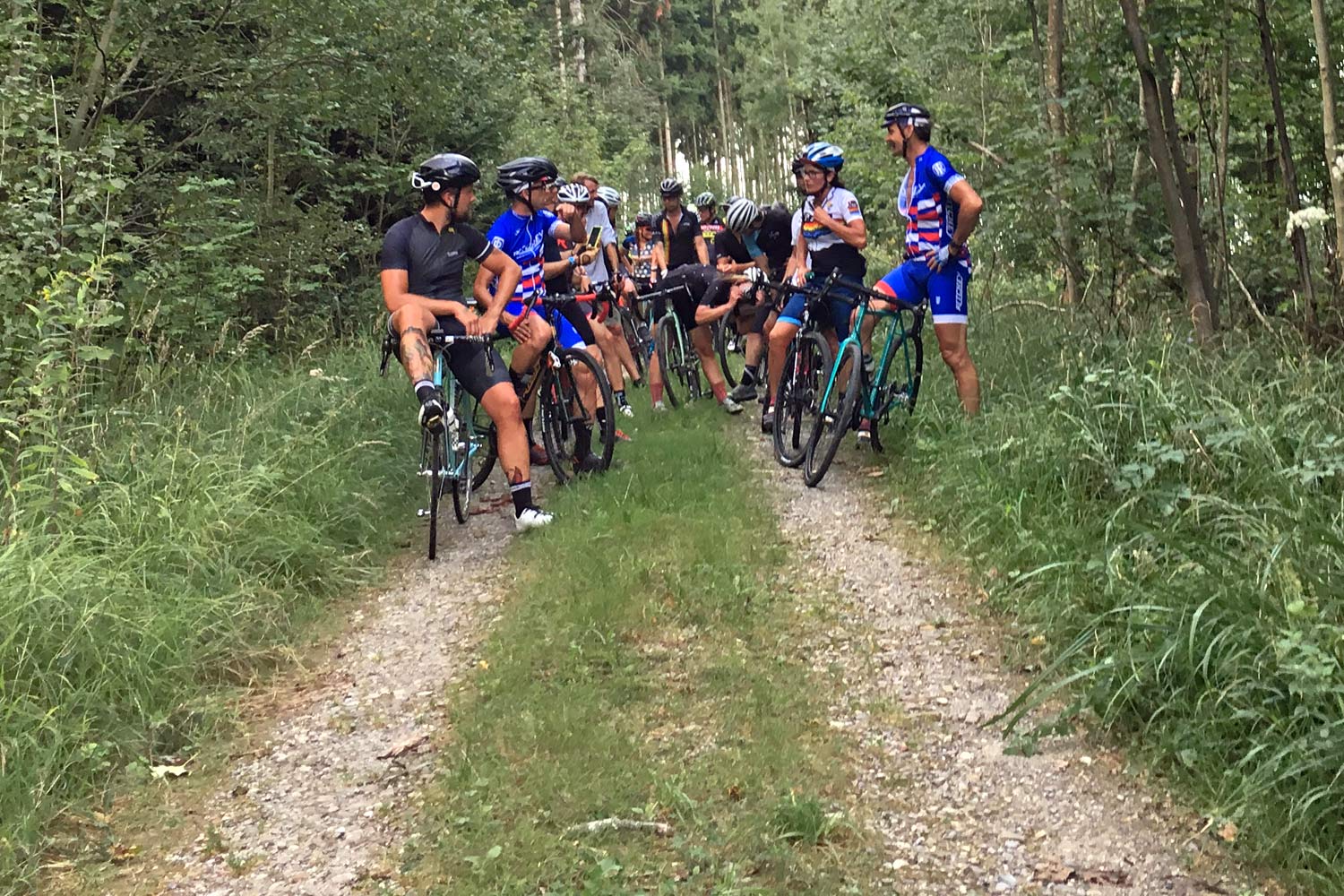We first got an up close look out at Ritchey’s newest do it all gravel bike last year at Eurobike, when it first debuted. Developed out of the popular Swiss Cross, the bike wasn’t quite ready for the big time, and Ritchey spent the better part of a year working on the details and giving it a new full carbon fork. Now the gravel bike is ready for your adventures. And we got it out for some first impressions, even riding with the man Tom Ritchey himself.
Ritchey Outback logic steel adventure road gravel bike
On paper, the Outback seems like the epitome of what contemporary Ritchey bikes are all about. A modern steel road bike designed to fit enough tire to ride any kind of road or trail (to 40mm). Plus, disc brakes for reliable stopping. And with Ritchey’s own custom triple butted steel WCS Logic tubing and a slightly curved seatstay design, it yields a relatively lightweight bike with a classic lively steel ride.
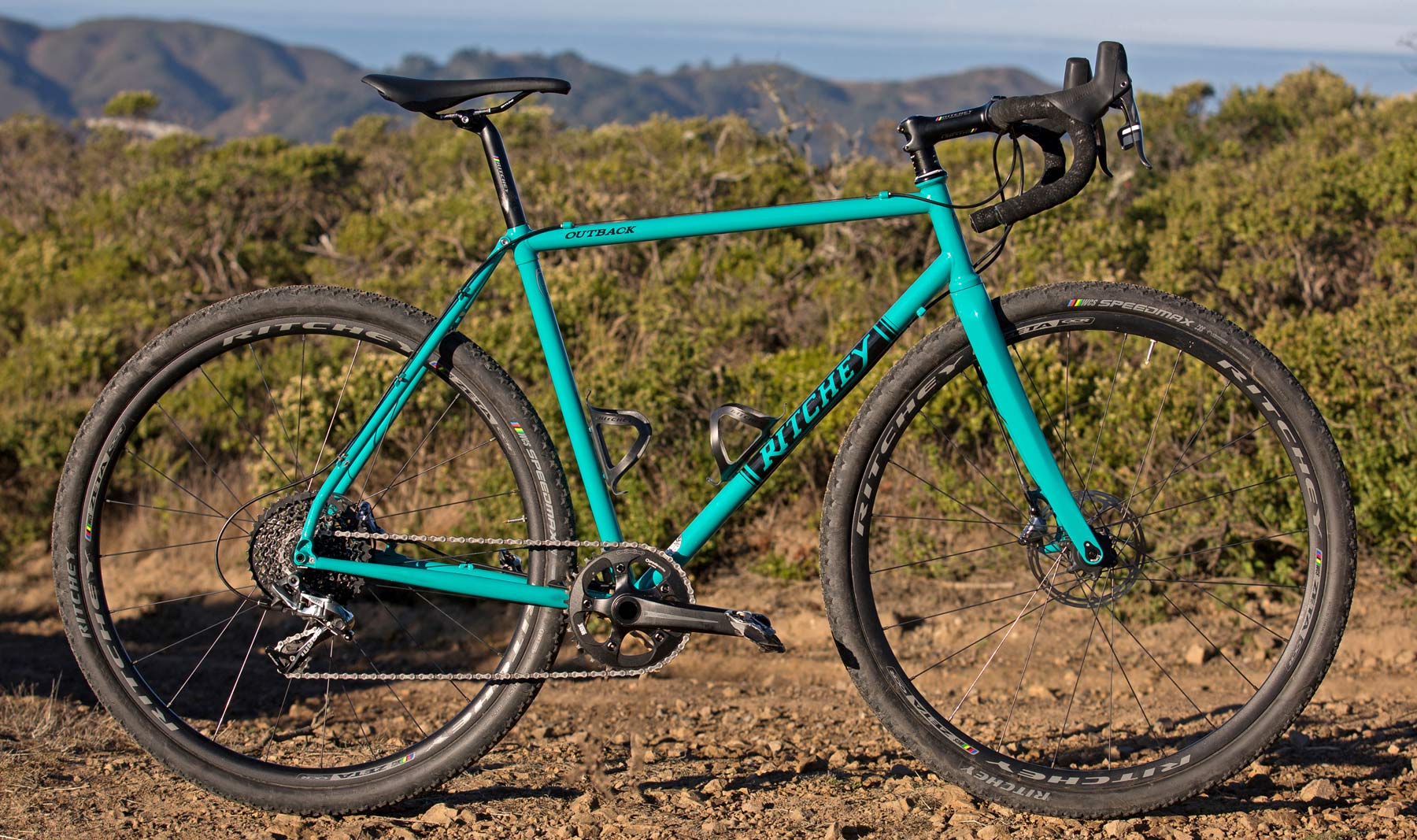
So it was a little surprising that a bike with such promise would take so long to market. It seems Ritchey knew the bike would be popular. So they were extra careful to get the details sorted before it was available, and to make sure production could keep up.
Tech Details
But that time is here now. The $1360/1500€ frameset (including headset & the all-new full carbon Outback WCS Gravel fork) is available now and shipping to both US & EU customers.
The bike sticks with some classic tech features – like a 27.2mm seatpost, integrated seatpost clamp, a 68mm threaded BB, straight 1.125″ steerer, and external cable routing.
But it also gets modern and semi-modern touches – like the neatly integrated headset cups, 12mm thru-axles, and disc brakes (although those stick with post mounts.) The bike is available in a five size range (XS-XL) with geometry more upright and relaxed than the more racy carbon Break-Away travel Outback that debuted several weeks back.
Bike Setup
We had the chance to get a bit of riding in on the new steel Outback this fall. That included a ride after Eurobike dubbed Tom’s Gravel Ride with a bunch of various other Ritchey bike builds, including Tom himself.
Like Tom, we rode the bike in a road compact double configuration with a Shimano Ultegra mechanical groupset, an 11-32 cassette, and hydraulic brakes. We also were sporting the WCS Alpine Jobst Brandt 700c x 35mm tires on Zeta wheels, curiously not set up tubeless and a solid performer on road & trail (even sliding predictably and confidently through the mud with a little momentum behind them).
Apparently the night before our ride with Tom, Ritchey’s EU team passed up time for beers to stay up late and set ten test bikes up tubeless. That’s actually a pretty rare treat for a test bike. Like when consumers buy bikes with tubeless-ready wheels & tires from a bike shop, but with tubes inside, the logistics of test bikes often means we at Bikerumor need to set them up tubeless ourselves. That often means our first few rides happen before we get around to digging out tubeless valves, tape & sealant.
Our complete Large bike weighed right around 10.6kg/23.4lb without pedals. That’s not exceptionally light, but respectable for a frame that claims to weigh 2170g on its own. Everything on our build was also aluminum. So there was plenty of room to shed some grams if you want to go down that road.
First Impressions
Benefitted by the tubeless – and not just tubeless-ready setup (hint: set your own gravel bike up tubeless right away, please), the new steel Outback was effectively everything we hoped it would be. The geometry of the bike (72° head/74° seat/70mm BB drop) proved stable and easy to manage for everything from asphalt to gravel to dirt singletrack. From the moment I jumped on the bike I was comfortable riding no-handed on or off-road. And when the track got wet & slippery the bike just was asking to ride faster.
Many carbon bikes & tapered carbon forks tend to talk-up the importance of front end stiffness with regards to ‘good’ handling. Ritchey knew what they’re doing by sticking to smaller straight 1 1/8″ carbon steerer tubes paired to their steel bikes. For sure it is less stiff, but the lateral flex of the front & rear ends of the steel Outback feel balanced together. And never did I get the sense of having less control through steering input. On the other hand, I’ve definitely ridden similar technical trails on cross & gravel bikes with stiff tapered carbon forks only to realize an hour after a ride that my shoulders were sore. That hasn’t happened yet on the Outback.
This is a production steel bike that isn’t going to compete with carbon competition of weight or ultimate speed. But steel is still real. And a real good option for the rough-and-tumble life of a gravel bike. I know if this bike found a place in my quiver, I would ride it hard and put it away wet for years to come.
So after that early tease, it was a long wait to see the Outback ready for customers. But it was probably worth the wait.
